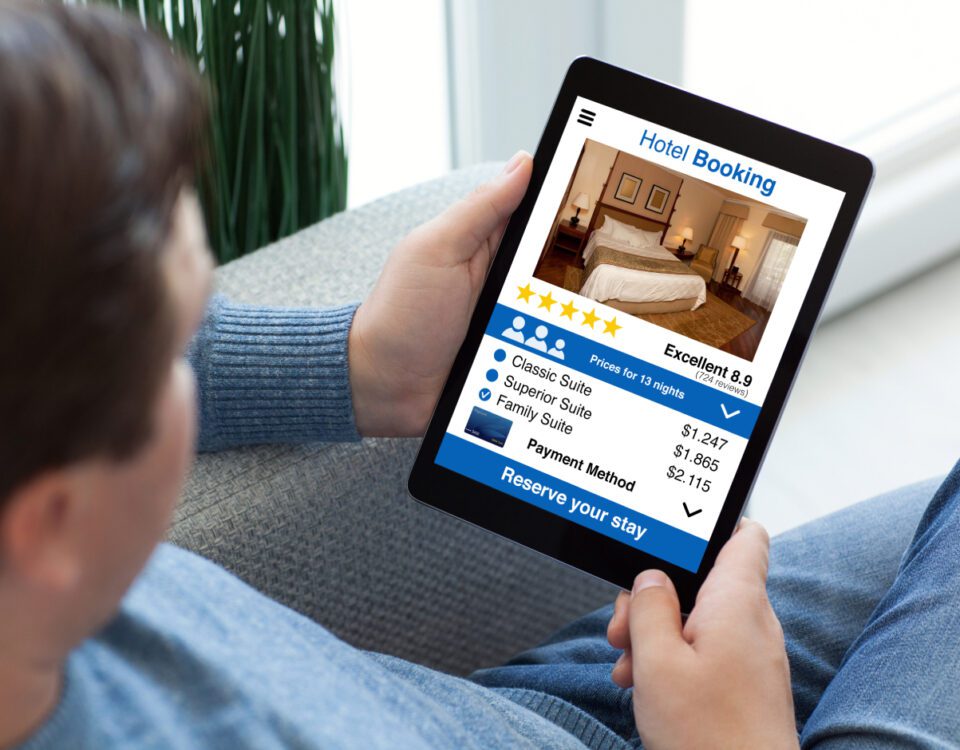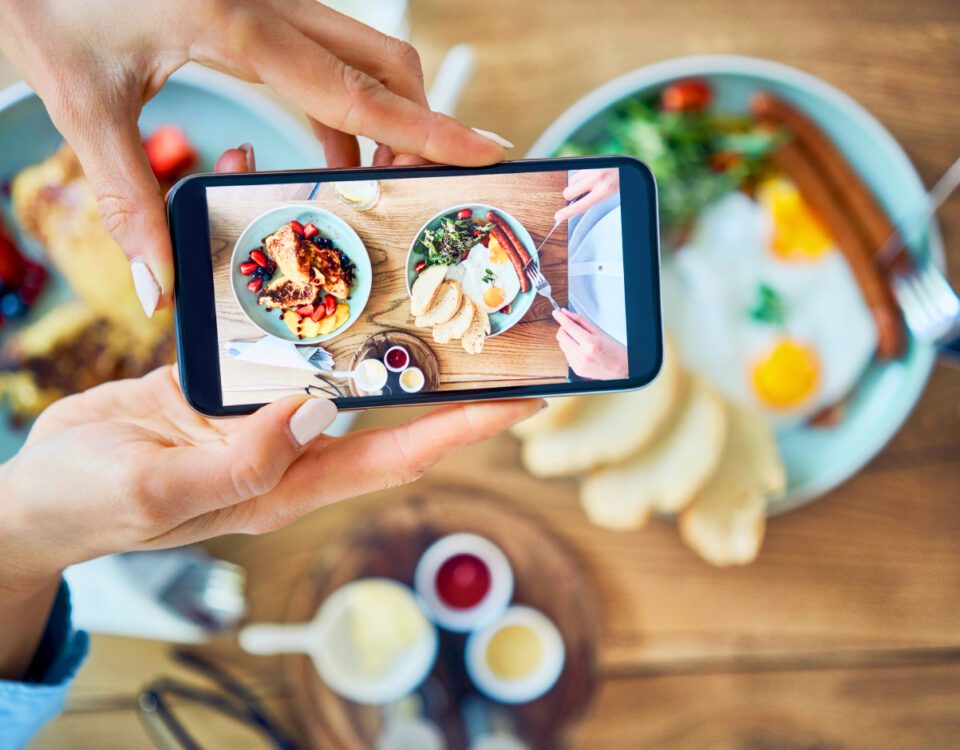Share
When social media first came onto the scene in the 90s, users only had the ability to upload plain text posts and simple photos for their friends and family to see. However, over the years, each platform’s capabilities have massively expanded - and plenty of new ones have arrived! Today, there are many different types of content that can be posted on users’ pages and profiles in order to achieve various goals and to encourage audience interaction.
While they may not all be suitable for your business, it’s important to include a mixture of content formats in your marketing strategy. Otherwise, your pages may start to feel limited and repetitive, and you may find yourself falling behind on key trends. Read on to discover our ultimate guide to social media content types and learn which ones may be appropriate for your brand.
Text Posts
As the name suggests, text posts are straightforward posts that only contain copy, without any images or videos being attached. These can be shared on Facebook, Twitter and LinkedIn. Because they aren’t particularly eye-catching, text posts tend to be much less engaging than those with images or videos, so we would recommend only using them when you need to make a quick announcement or share a brief update.
Text posts are also fine for occasions where you want to share a link to an external webpage, such as a blog post on your website. If you add a URL to your post, a link preview (called a ‘card’ on Twitter) will be generated using an image from the webpage you’re linking to (usually the biggest or most prominent image on the page), giving it a visual element to catch your audience’s attention.
Photos & Images
Adding a photo or another type of image, such as a branded graphic, to your social media posts can massively boost your reach and engagement levels. In fact, Facebook posts with images see 2.3 times more engagement than those without, LinkedIn posts with images have a 98% higher comment rate on average, and tweets with images are 3 times more likely to receive engagement.
As explained in our previous blog post, if your brand has a specific product or location to focus on, such as eCommerce brands, food and drink brands, restaurants and hotels, it’s important to have regular photoshoots with a professional photographer. This will enable you to assemble a library of high quality, up-to-date images of your products, services or location that you can then share onto your socials, either on their own or with some branding elements added to them.
Carousels
On social media, a carousel is a post which contains multiple images and/or videos that are all the same size and shape and can be scrolled or swiped through. They can either be completely separate images that don’t tie together, or one long image that has been split up into squares to tell a connected story.
Carousels are available on Instagram as an organic (unpaid) format and an ad (paid) format, whereas on Facebook they are only available as paid ads. On LinkedIn, they are available as an organic format (although this feature is still being rolled out, so it’s not visible for all users yet) and an ad format. You can also post carousels on TikTok using Photo Mode, which will play through your chosen images automatically or users can swipe through at their own pace. Plus, you can add music as a soundtrack for your carousel.
Organic carousels feature one caption for the whole carousel, whereas ad carousels can have a separate caption and CTA button for each image.


Videos
86% of social media users say they would like to see more videos from brands, so if your brand isn’t sharing any video content at the moment, you could be missing out on a huge opportunity to engage and impress your audience. Although short-form videos are rapidly becoming the preferred video format, there’s definitely still some value to be found in longer videos too, with 24% of social media users confirming that they find long-form video the most engaging.
Additionally, 760 million users use both desktop and mobile phones to access social media, suggesting that it’s still a good idea to post a mixture of both vertical (9:16) and horizontal (16:9) videos to suit both screen sizes. It’s worth noting however that this only applies to Facebook, Twitter and LinkedIn - we would recommend steering clear of horizontal videos on Instagram and TikTok, as vertical videos are a priority on these platforms.
Reels & TikToks
Reels (available on both Instagram and Facebook) and TikToks are full-screen, vertical, short-form videos which are great for giving your audience a brief, fast-paced glimpse into your business, and for participating in viral trends. Songs, soundbites and other audio clips can be added to your Reels and TikToks if you don’t want to use the original audio from your video, and they can be decorated with filters, stickers and other fun elements.
58% of viewers will watch the entirety of a business’s video if it’s less than 60 seconds long and 66% of consumers agree that short-form video is the most engaging type of social media content, so if you haven’t yet delved into creating these types of videos, now is definitely the time to get started!
Stories
Originating on Snapchat in 2013 but now also available on Instagram, Facebook and TikTok, Stories are full-screen, vertical images and videos that stay on your page for 24 hours before disappearing, making them the perfect place to share behind-the-scenes clips and everyday moments. They can be viewed by tapping on your profile picture when visiting your page, or at the top of the home feed.
Due to their temporary nature, users only have a set period to engage with Stories, so they’re a good way to keep people coming back to see more. You can add stickers and interactive elements for your audience to participate in such as polls, question boxes and countdowns, and on Instagram, you can add your favourite Stories to your Highlights as a way of preserving them after their original 24 hour viewing period.
Polls
Polls can be posted on Twitter, LinkedIn and Instagram Stories using the poll sticker. They’re a great way to ask your audience questions and see how they’re feeling about specific topics and ideas. On all 3 platforms, you can add up to 4 options for users to vote between. On Twitter, your polls can last from 5 minutes to 7 days, whereas on LinkedIn, you can choose either 1 day, 3 days, 1 week or 2 weeks. On Instagram Stories, your poll ends when your Story expires - so 24 hours.
Polls aren’t available on Facebook, however you can create one manually by asking people to use the reaction emojis to vote for various options or to comment with their favourite option from a list.
Articles
Articles are useful for sharing information, insights and other educational content with your audience, and are a good way to repurpose blog posts from your website.
LinkedIn has a dedicated article publishing feature where you can write and share long-form articles (up to 110,000 characters) that can include images and embedded content, such as social media posts from other platforms. You can also mention other LinkedIn users, companies and hashtags within your articles, which become clickable when published. Depending on your profile settings, your articles may be searchable both on and off LinkedIn, so they’re great for SEO purposes too.
On Facebook, you can include just over 60,000 characters in a standard post, and Twitter users who pay for a Twitter Blue subscription can tweet up to 10,000 characters so technically you can share articles on these platforms too. However, we would recommend keeping your Facebook posts and tweets fairly brief and instead linking to your blog posts if you want to share articles here.


Shoppable Posts
Shoppable posts are images, videos and Stories that include tagged products from your social storefront which can be purchased directly from social media. They’re available on Facebook, Instagram and TikTok, and if you enable the checkout tool on each platform, customers can even pay for their items without having to leave the app.
Alternatively, if you haven’t set up a social media shop yet, you can create shoppable content by simply including regular links to your products in the main body text of your posts. This means people can click through to your website and make a purchase there instead. We would recommend keeping the amount of links in your posts to a minimum, and always make sure to use a URL shortener such as Bitly to tidy up your links and prevent your posts from looking spammy and overcrowded.
UGC
UGC stands for User Generated Content and refers to any photos, videos, testimonials and reviews posted online by your customers regarding your brand’s product or service. If you see something you’d like to share onto your own page, ask the customer for permission and wait for them to approve before downloading or screenshotting their content. You can then repost it onto your page, either by itself or with your own branded elements added, such as your company logo or a border that incorporates your brand colours. When sharing UGC, don’t forget to tag or mention the original poster in your caption so people know who the content belongs to.
Millennials trust UGC 50% more than content generated by brands, and 79% of people say that it highly impacts their purchasing decisions. UGC is an excellent way to show your audience how your product or service functions in a real-life setting, helping you build social proof, foster authenticity and set realistic expectations for your customers.
Ads
Social media ads are posts which have been paid for by the advertiser in order to boost their reach and impact, and to increase their chances of achieving a desired outcome - such as a purchase or sign-up. On most platforms, you’ll usually see a ‘sponsored’ or ‘promoted’ message above or below an ad to help you identify that the content has been paid to appear in your feed. Like organic posts, ads come in many different shapes and sizes, with each platform offering a wide range of targeting options and budgeting tools. You can learn about all the different types of social media ad formats and objectives in this blog post.
Infographics
Infographics are an excellent choice for B2B businesses and those that deal with statistics, educational or instructive content, and other information that would otherwise have to be posted as plain text. They make data easier to digest and more visually appealing - in fact, using coloured infographics can boost a reader’s attention span and comprehensibility by as much as 82%. They’re also a handy tool for businesses in the healthcare sector, with patients being 2.84 times more likely to understand their condition better if their health data is presented in the form of an infographic.
When sharing infographics on social media, it’s important to bear in mind the recommended image dimensions for each platform to ensure that none of the text gets cut off or cropped out of view in the feed, or on your profile. It may be a good idea to remind your audience to click or tap on the infographic to view it in full if the whole image can’t be displayed in the post preview.
Summary
As you can see, there are many different types of content that can be shared on social media to achieve various goals and outcomes, and to engage your audience in different ways. If you feel that your brand’s pages are becoming a little repetitive or you’re struggling to stand out from the crowd, give some of the ideas we’ve listed today a try and see which ones improve your results.
Which content types do you usually post for your business? Are you planning to diversify your strategy as we head towards the second half of 2023? Tweet us @3sixfivepro to share your thoughts or to request some tailored content suggestions for your brand.










